Embarking from Ulaanbaatar towards Dalanzadgad, we encounter a mostly smooth road, marred only by occasional potholes across a hundred kilometers, which still permits rapid travel. Gathering supplies near the airport at dawn, we journey several hundred kilometers to Mandalgobi. Here, we enjoy a pleasant lunch in a quaint restaurant, unexpectedly operated by the owner’s timid children peeking over a bar twice their height. By the afternoon, we’re exploring Dalanzadgad, a city 600 kilometers from Ulaanbaatar, serving as the hub for roughly 20,000 residents and the capital of Ömnögovi Aimag. Its proximity to Dund Sayhni Nuru, our next peak challenge, positions it perfectly for our night’s rest, preparing us for the adventures that lie ahead.
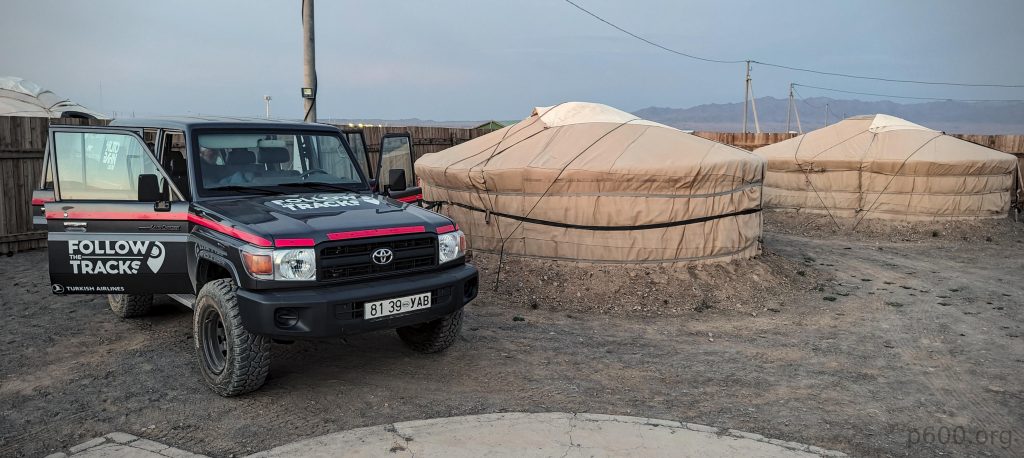
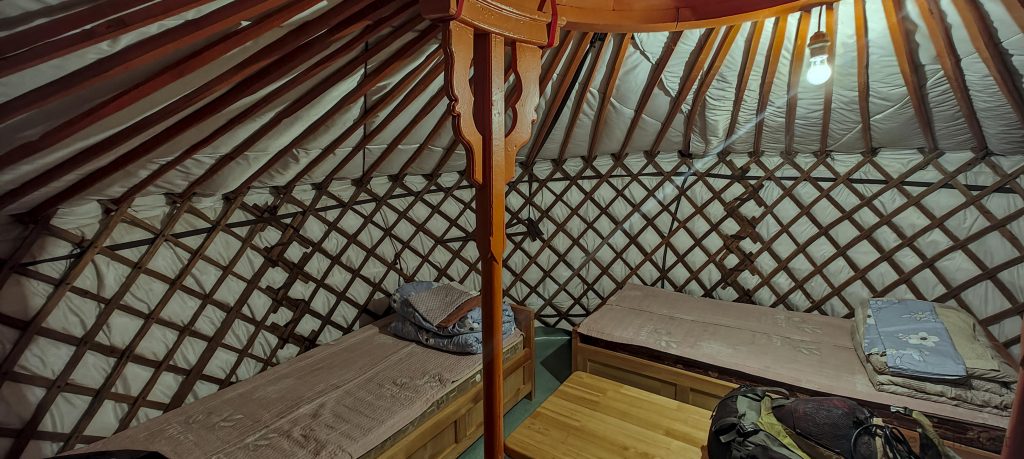
Despite being prepared for a night under the stars in the steppe, the allure of a cozy hotel in Dalanzadgad proves too enticing to ignore. The reality of securing accommodations outside Ulaanbaatar hits us hard, with options scarce and digital footprints virtually nonexistent. Yet, fortune smiles upon us at the hotel reception, where we’re told of no vacancies but are offered a local homestay instead. We eagerly follow a local’s car for a few kilometers to our homestay, where the sight of a traditional yurt awaits us. This unexpected turn of events sets the stage for a memorable and authentic first night in the Mongolian countryside.
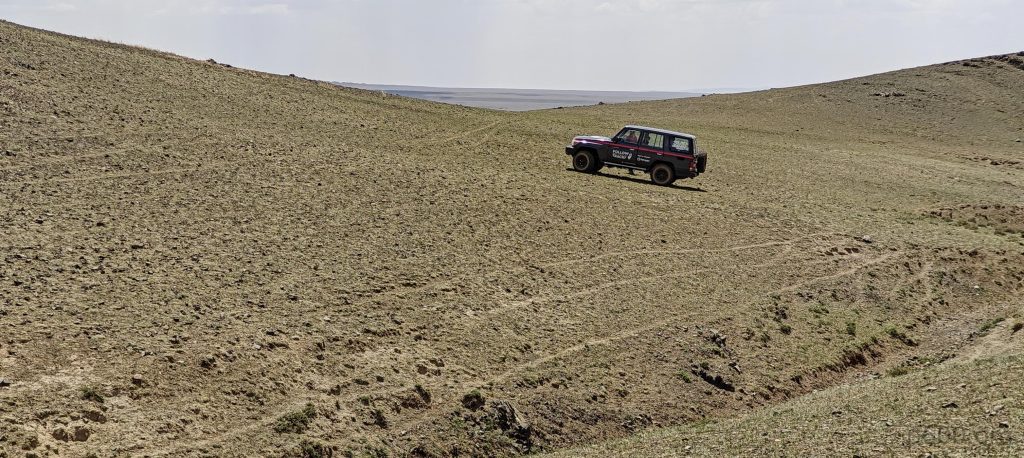
With the dawn breaking, we set off southwest to Bayandalaj village, journeying an additional fifty-plus kilometers. Eventually, we divert from the paved road, aiming directly for the summit. The path ahead isn’t entirely off-road, thanks to discernible tracks guiding our way. We navigate successfully for about twelve kilometers until a deep ravine bars our progress, signaling unmistakably that it’s time to leave the car behind and proceed on foot.
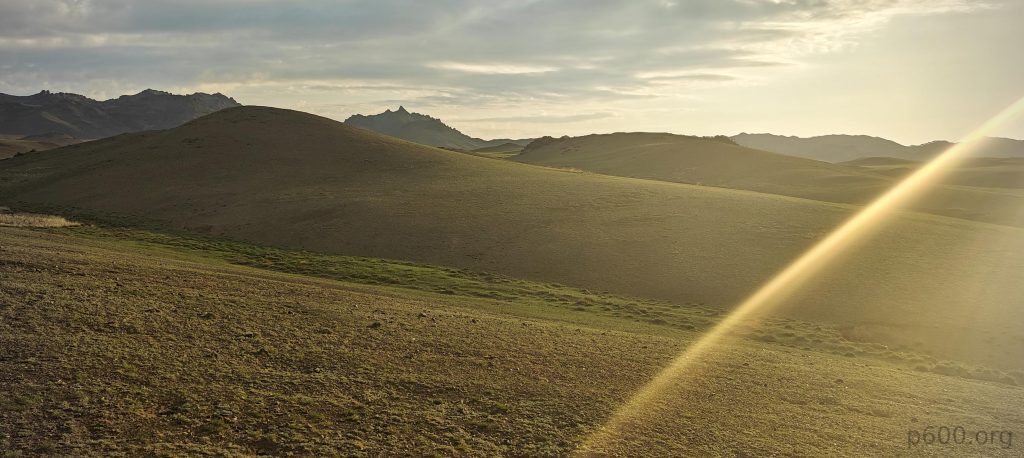
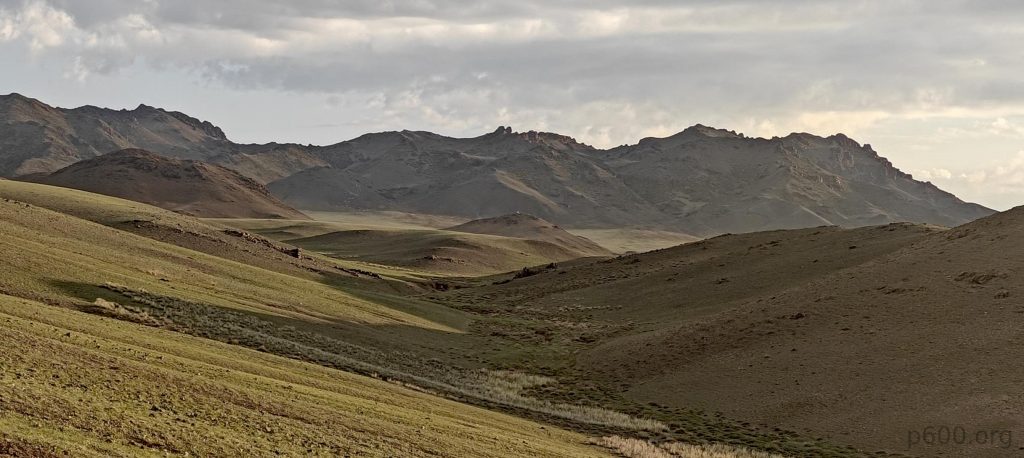
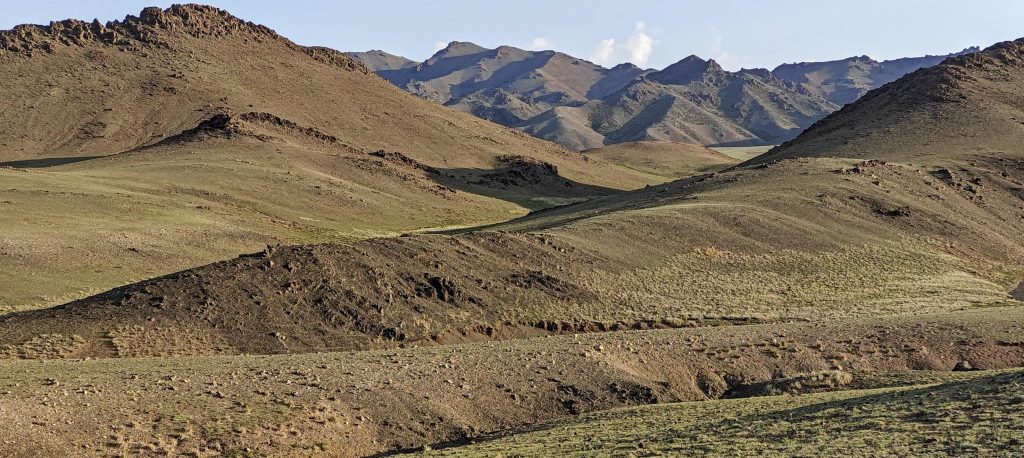
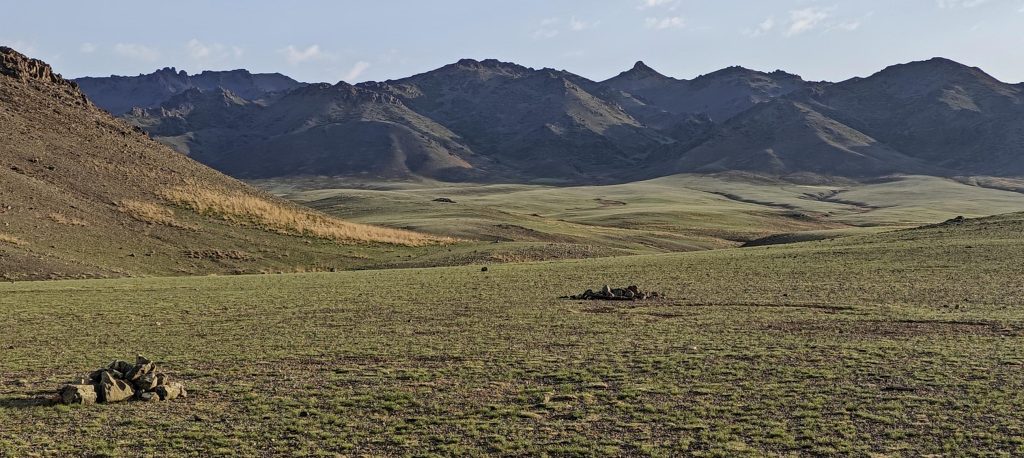
The morning greets us with perfect temperatures, balancing between cool and warm, enhancing the enjoyment of our walk. The land unfolds with mild inclinations, proving to be hiker-friendly. Within an hour, we find ourselves at the mountain’s base, ready to tackle the ascent. Our climb, though direct, becomes gradually steeper with each new slope. Navigating one slope after another, we soon arrive at the ridge, leading us unmistakably towards the summit. With the ridge well-defined and straightforward, our progress towards the peak is quick and unimpeded.
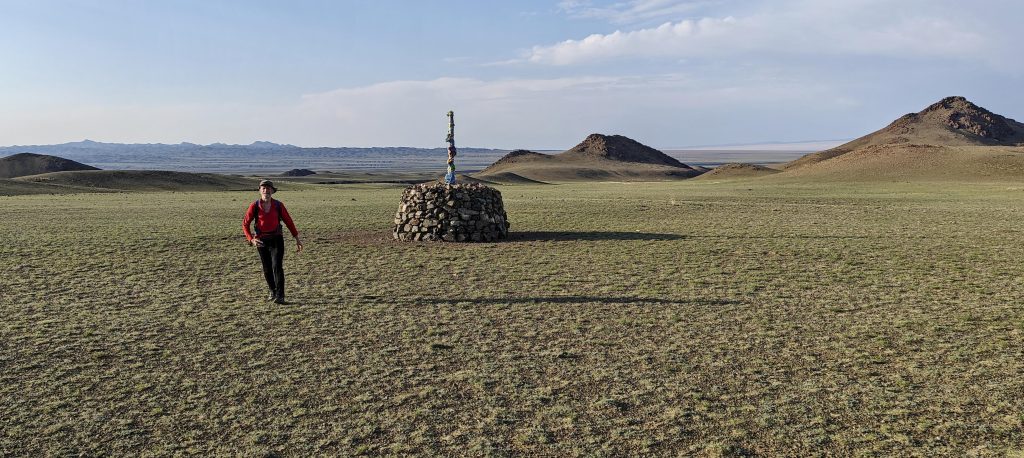
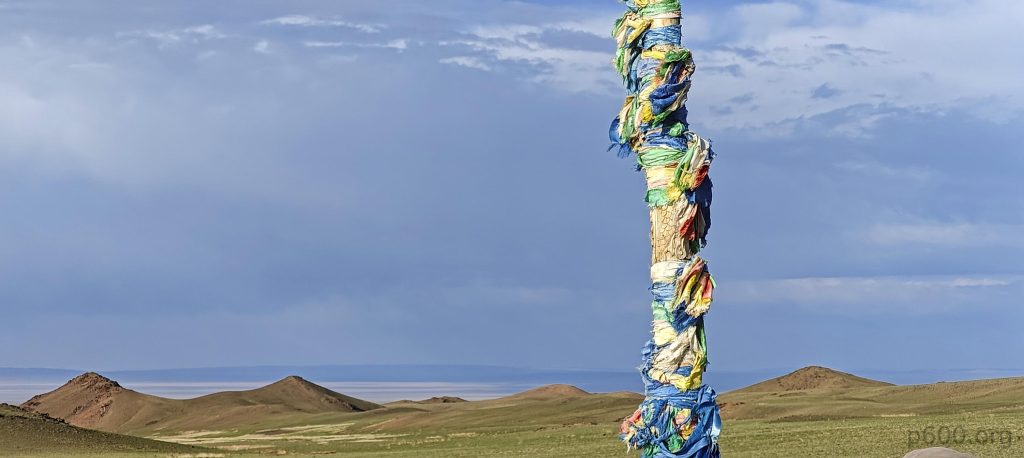
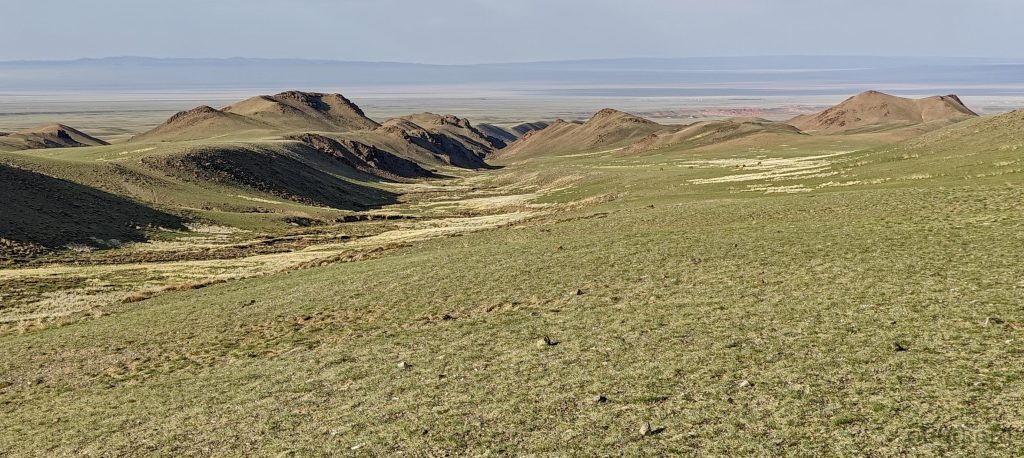


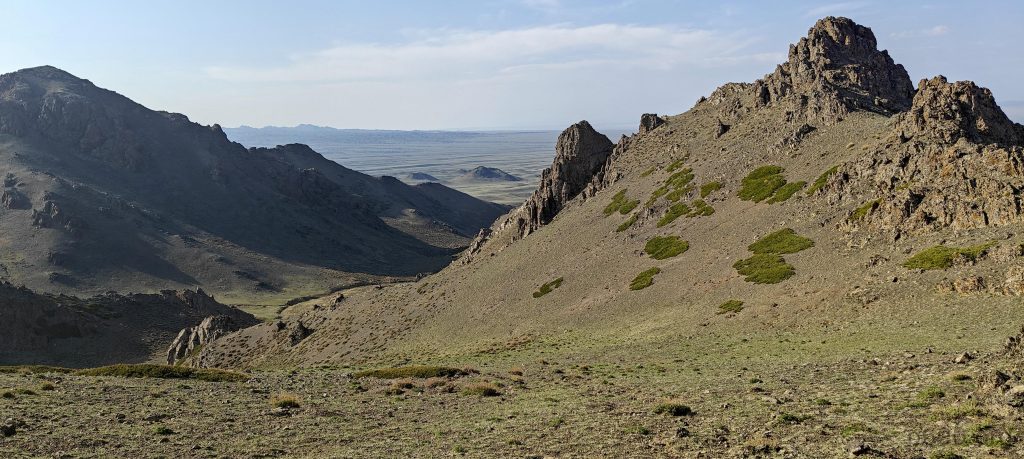
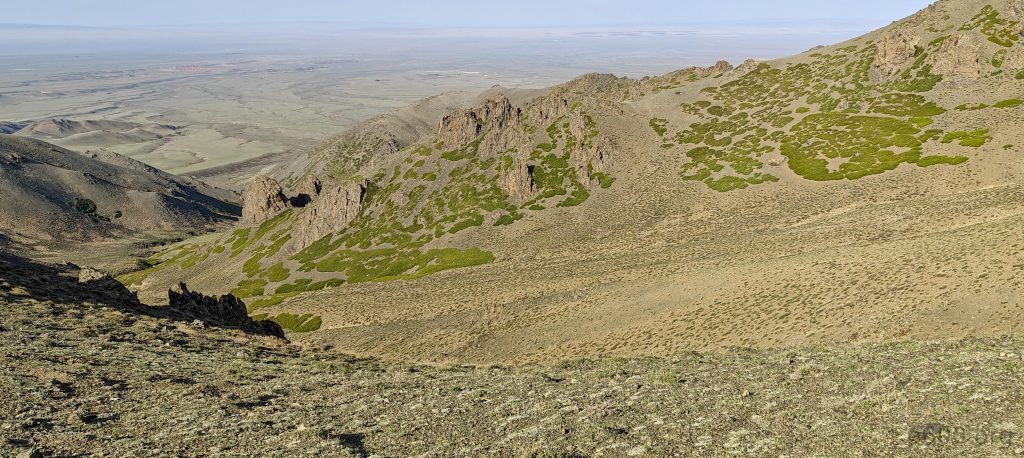

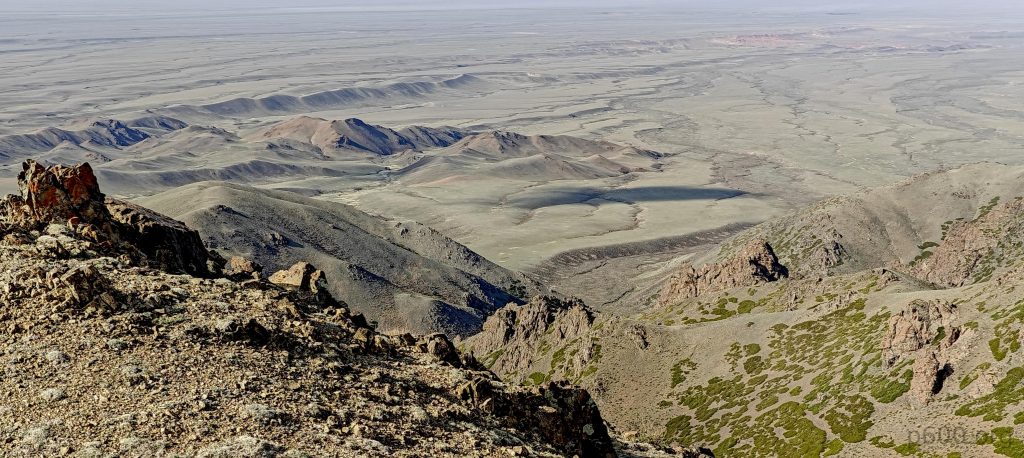
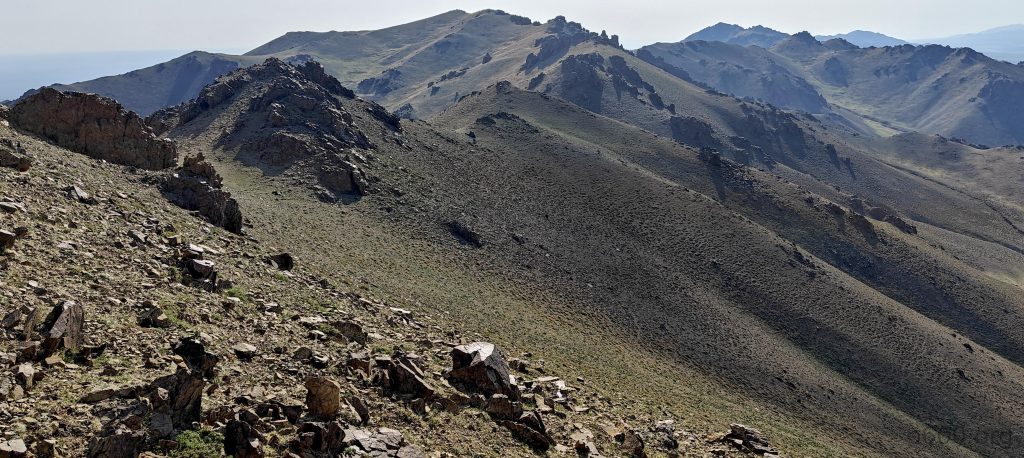
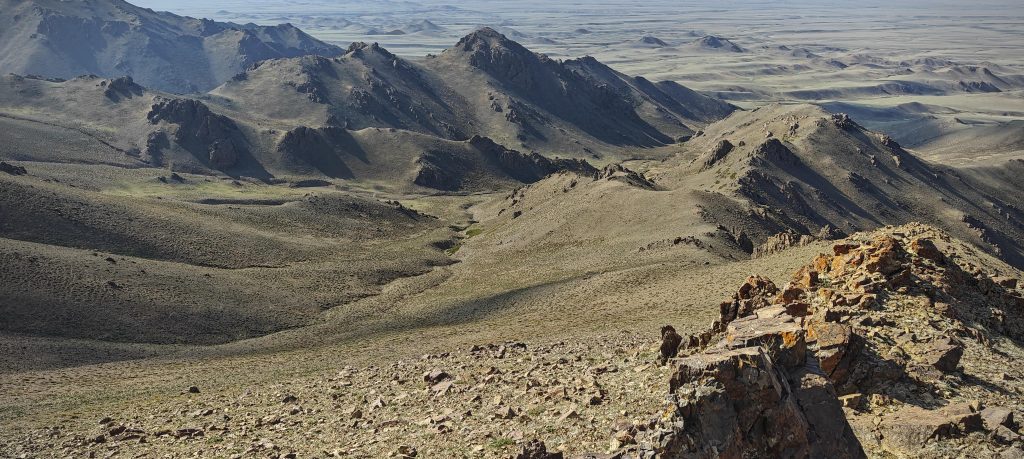
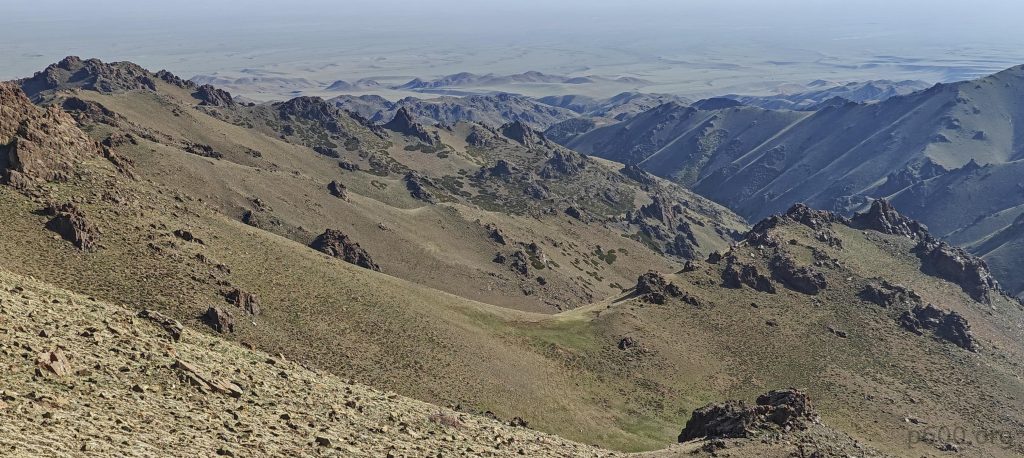
This mountain features three lesser sub-summits, spaced a few kilometers apart, with the tallest named Middle Beauty. Curiously, our map shows Eastern Beauty about 30 kilometers southeast, possibly in another mountain range, standing slightly shorter at 2815 meters, unlike the towering Dund Sayhni Nuru. Though it’s speculative, there’s a chance that to the northwest lies a counterpart known as Western Beauty, completing this geographical trio of aesthetic nomenclature.
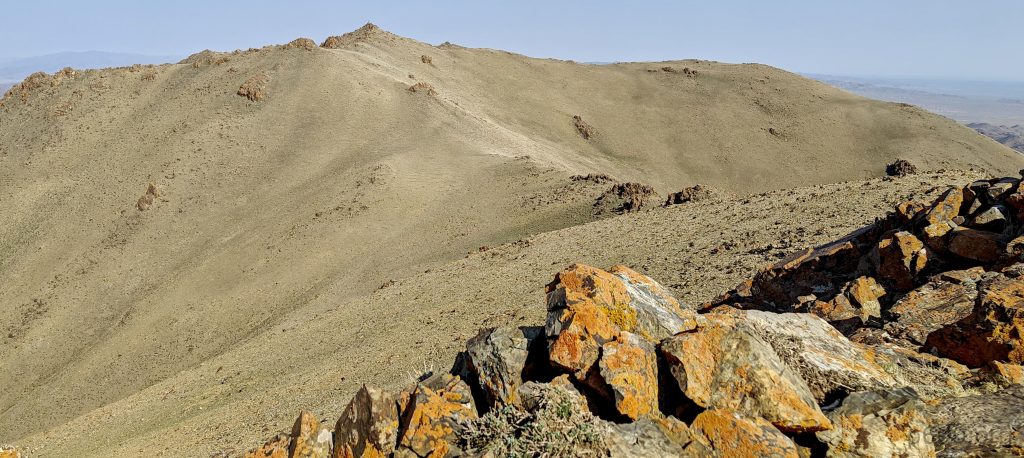

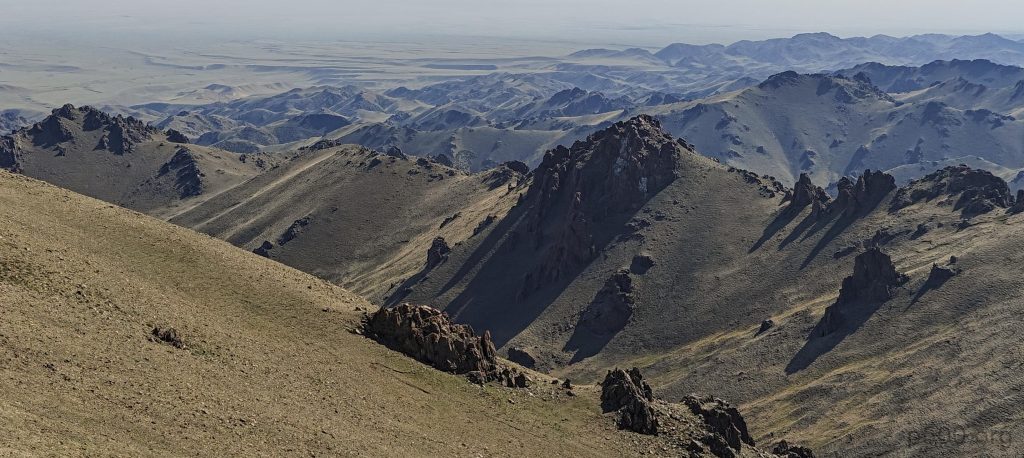
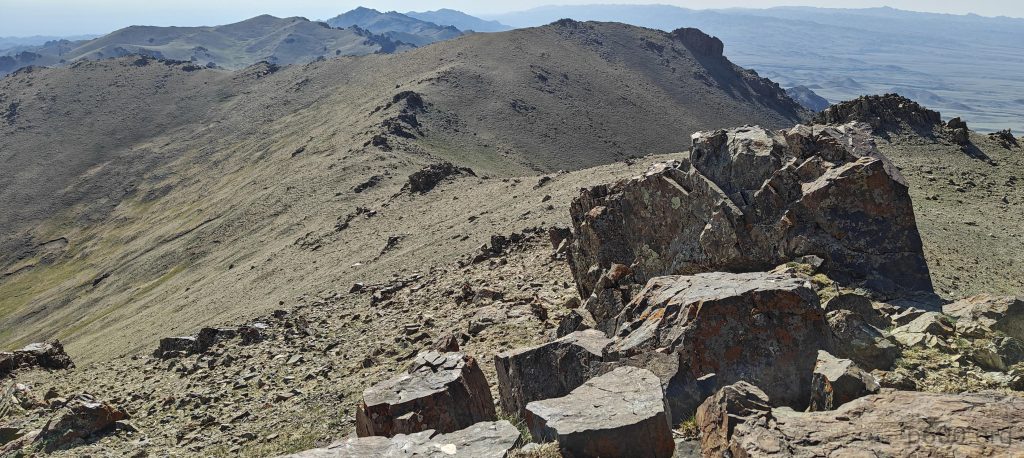
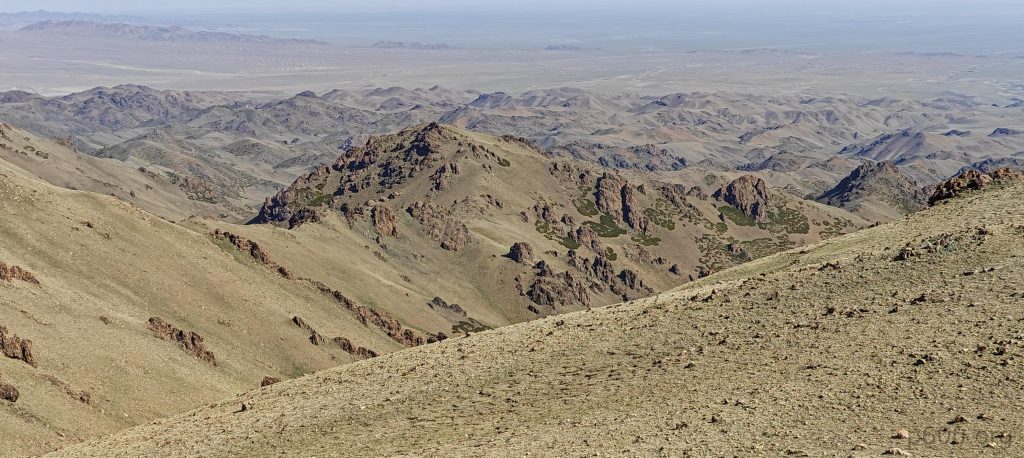
Upon reaching the summit, we encountered a familiar blue shrine. Deciding to extend our exploration, we ventured towards the northwest sub-peak. Despite Rob’s handheld level indicating it was slightly lower, curiosity propelled us forward. Intriguingly, just below the summit, we spotted a striking white bar, which, upon closer inspection, revealed itself to be another radiant shrine.

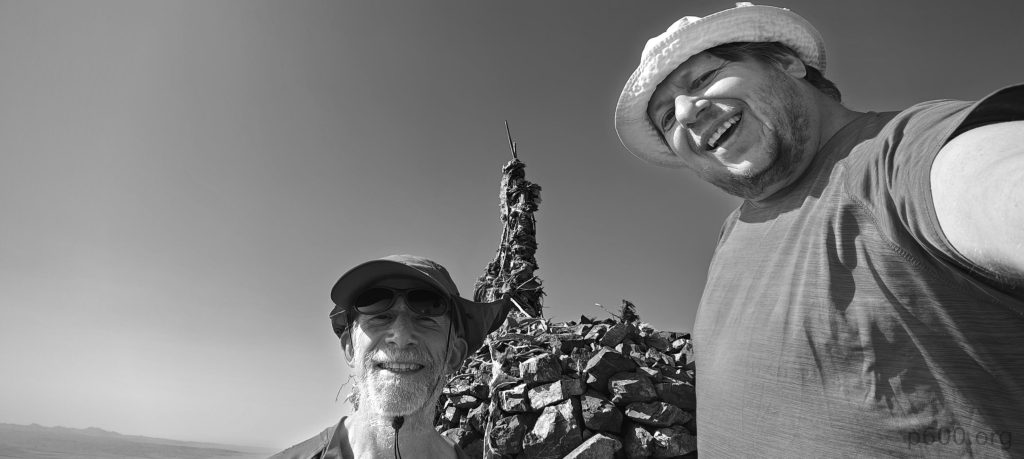
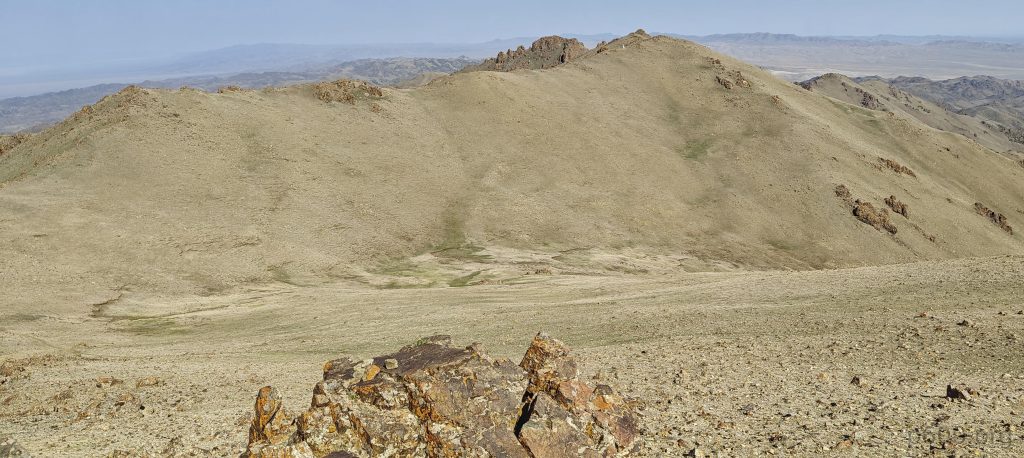
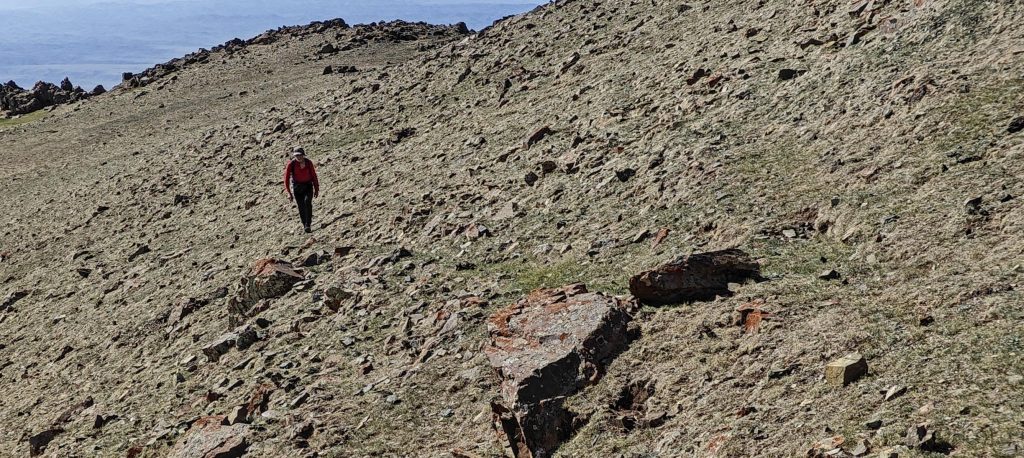
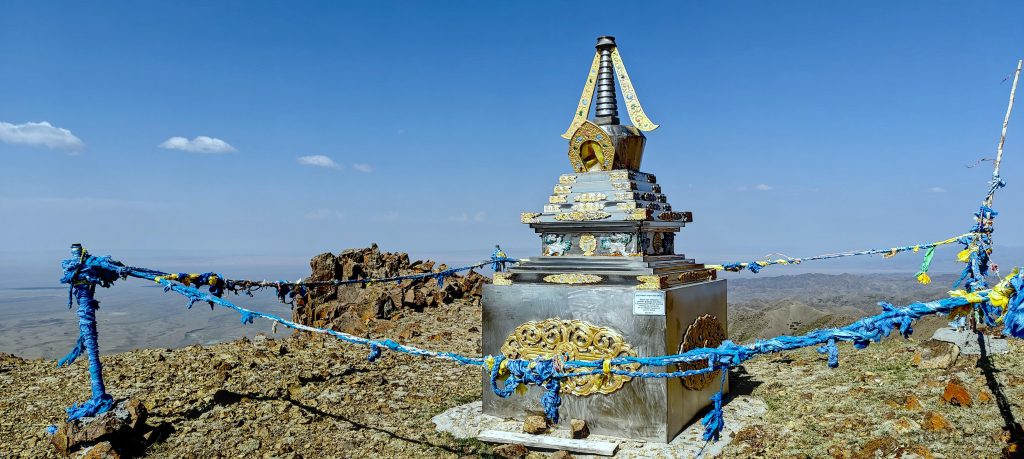
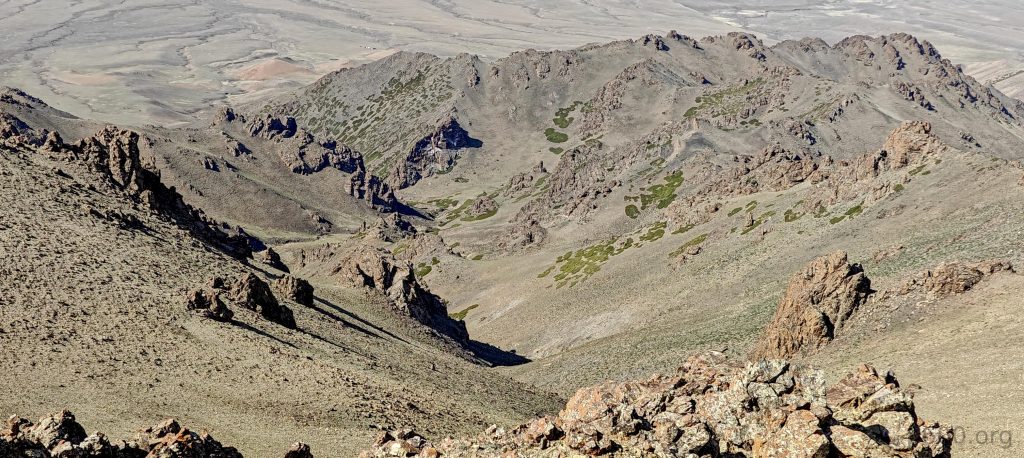
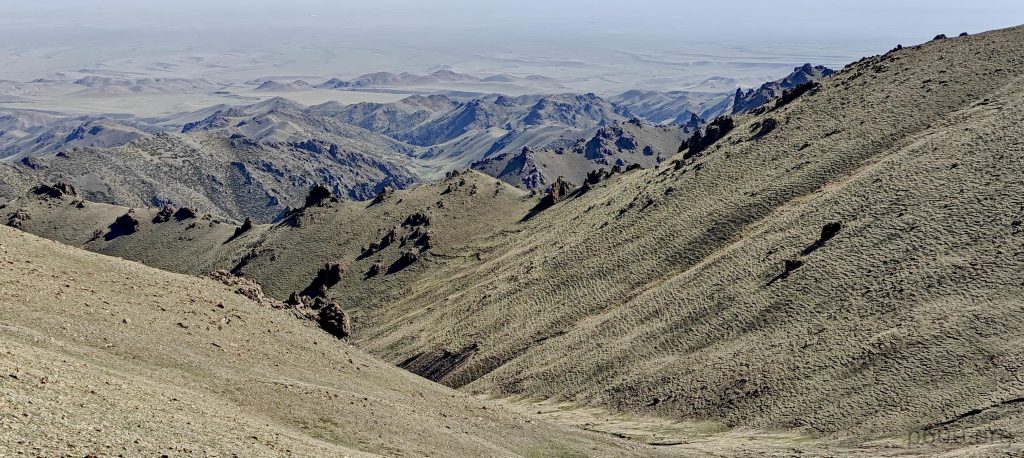
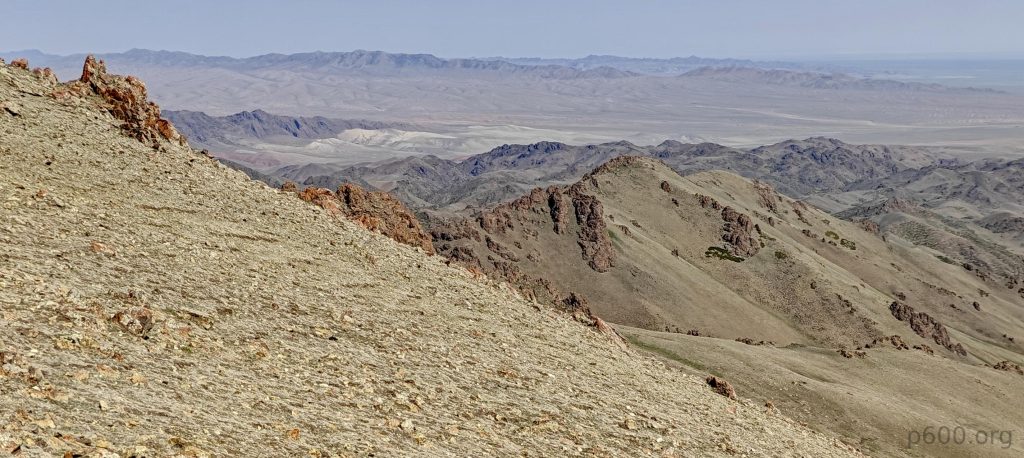
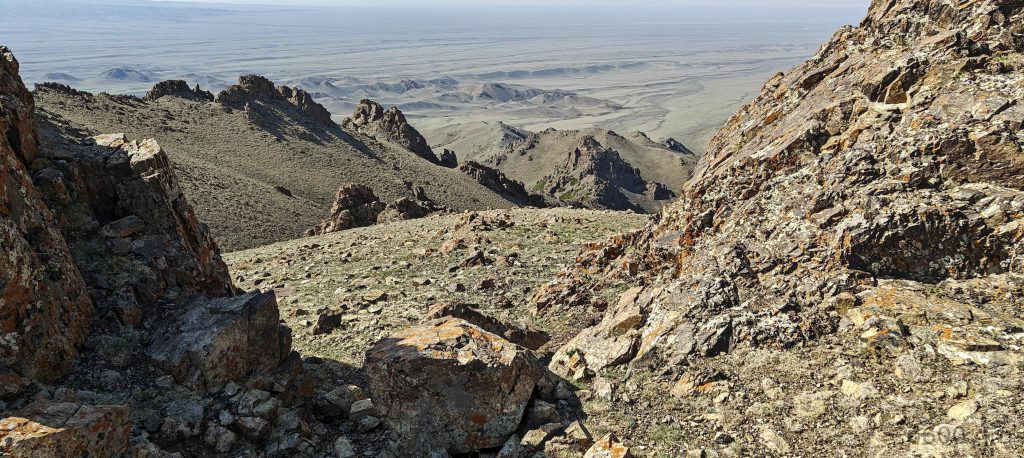
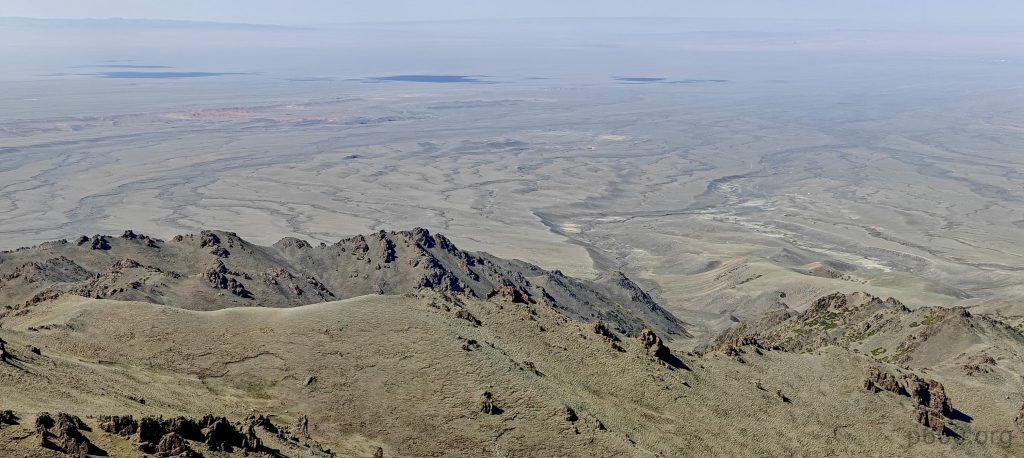

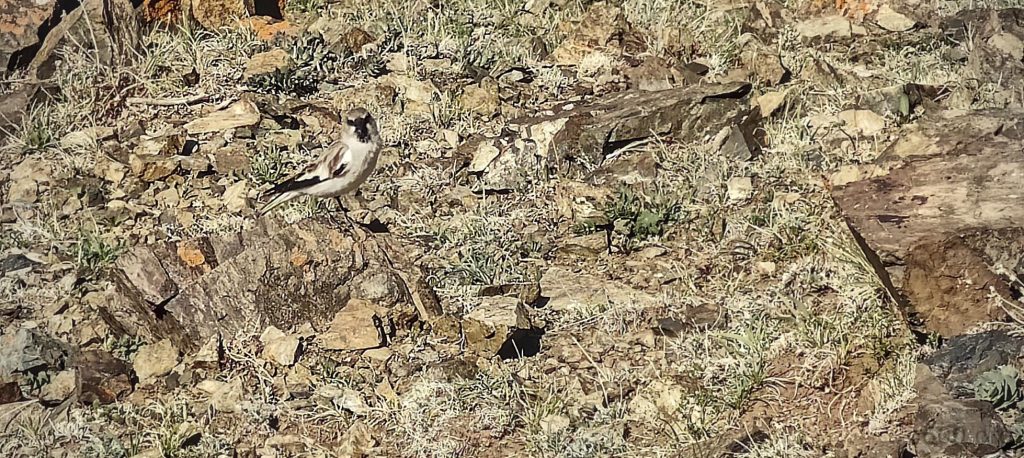
Descending along the same ridge, we begin our descent earlier, just before reaching the southeast sub-peak. Roughly half a mile from there, we reconnect with our initial ascent route. The terrain proves manageable, mirroring the ascent’s quality and challenge. Quickly, we find ourselves on flatter ground, noticing car tracks that suggest a closer parking spot might have been feasible for the summit approach. Despite this realization, the impact on our journey is minimal; we proceed for another half hour before veering off to explore two minor elevations, P61 and P40 (Dund Saynhi Nuru – Peak 2332m and Dund Saynhi Nuru – Peak 2305m), enjoying an effortless scramble and the panoramic views it offers. Back at the car, we indulge in a simple lunch of sardines and noodle soup. Our journey continues, and nearing the paved road, we encounter a P30 peak, prompting Rob to push our vehicle to its limits. Ultimately, we walk the final stretch, a reminder that our trusty car, unlike our ambition, has its bounds.

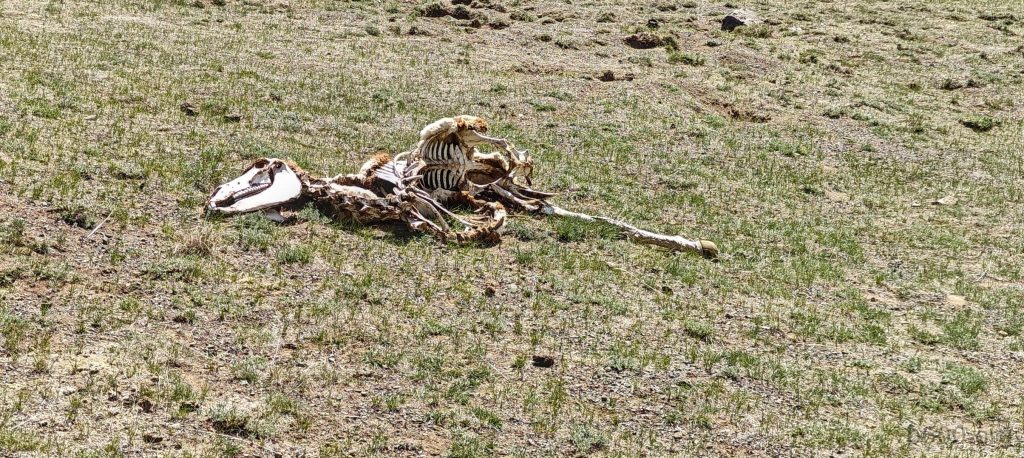

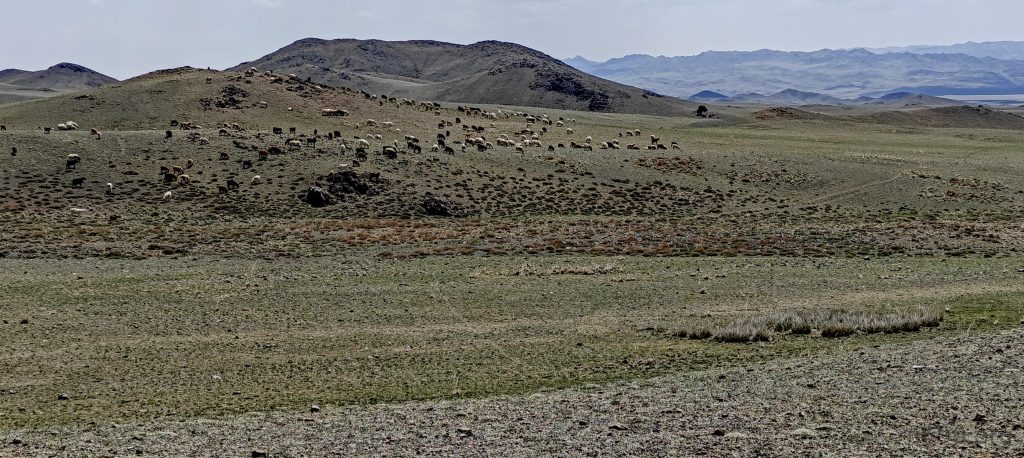
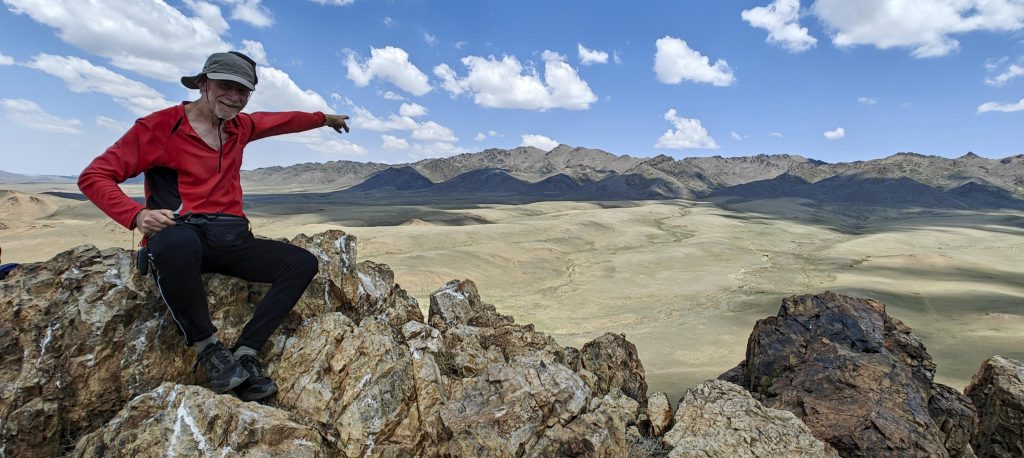
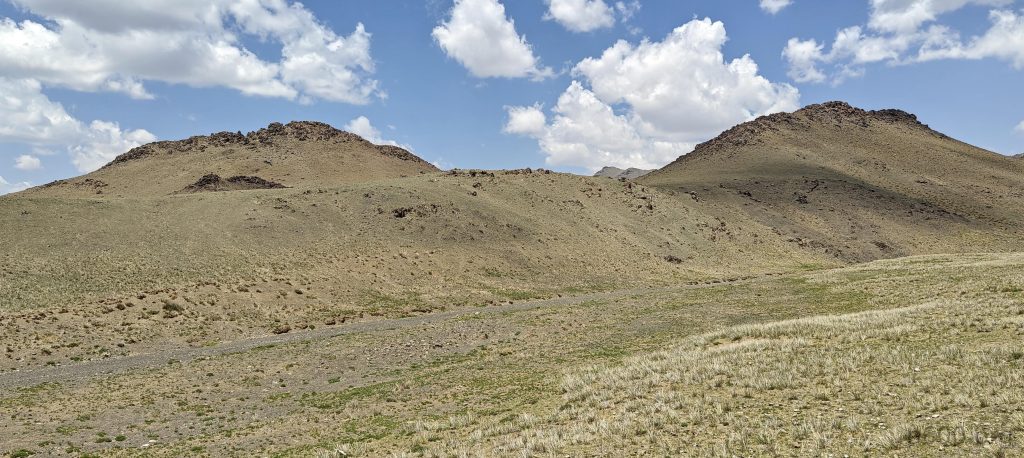
P60 and P40 peaks which we detoured on the way back (right)
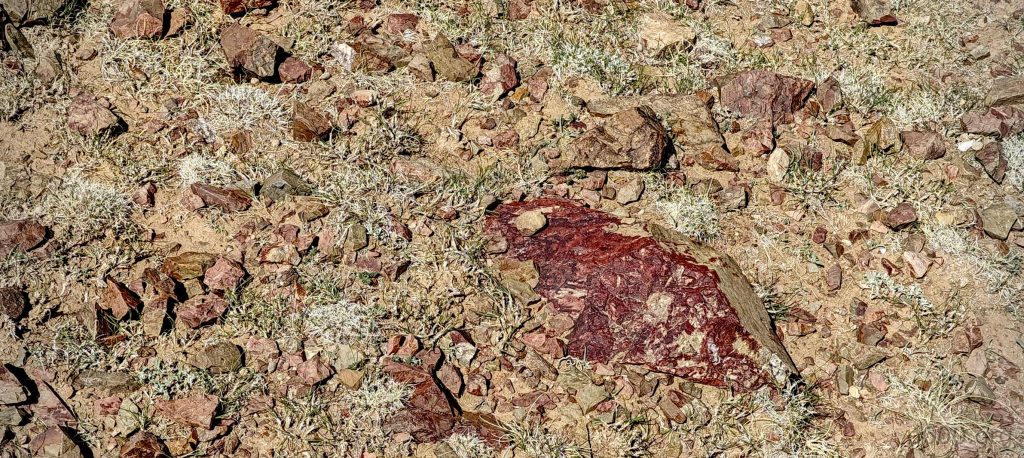






Celebrating a momentous day, we’ve triumphantly scaled our first ultra-prominent Mongolian peak, claiming the Gobi Desert Ranges Highpoint. Our path to this milestone was riddled with uncertainties, yet it all came together flawlessly. Fueled by optimism, we eyed the possibility of traversing the Gobi Desert towards Myangan Yamaat. However, our return to Dalanzadgad was prompted by encountering a formidable sandstorm, initially aiming to cross the Gobi Desert and take a shortcut directly to the next mountain. Confronted by a wall of sand and mere meters of visibility, we made the prudent decision to retract our steps and drive 150 km back. This detour allowed us to enrich our expedition by visiting additional minor peaks like Peak 1156, Bulgan, Peak 1158, Bulgan, and Ich-Tevsh-Ula.
Despite the altered route, reaching each highpoint filled us with a sense of accomplishment, quietly nurturing the hope to explore more peaks—perhaps 5, or even 8. Therefore, our journey presses on, with our enthusiasm unwavering and our ambitions reaching ever higher.



